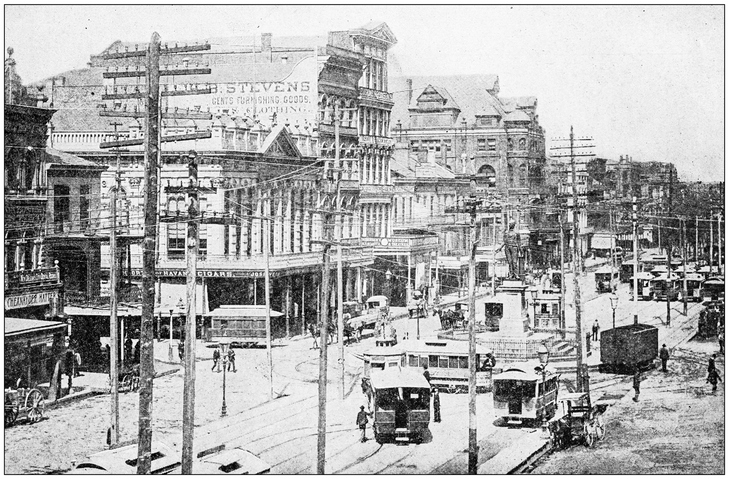The Story Of The Robert Charles Riots In New Orleans

Race riots have stained the fabric of American history, leaving behind tragic stories of violence, terror and resistance.
From the New York City Draft Riots of 1863 to the Red Summer of 1919, these uprisings gave white supremacist violence a space to spill from the nation’s pores into Black communities already struggling to find their place in a changing America.
One lesser-known flashpoint that rarely receives the attention it deserves is the Robert Charles Riots of 1900 in New Orleans—a pivotal moment at the dawn of Jim Crow, marked by individual Black defiance and a white backlash that almost tore a city apart.
To understand the chaos that would engulf New Orleans in the summer of 1900, you first have to understand the man at the center of it all: Robert Charles.
Robert Charles was a self-educated Black laborer who believed deeply that Black people had a right to defend themselves, so much so that it would eventually cost him his life.
Like many other Black people during that period, Charles moved from New Orleans to Mississippi in search of work and a better life. Like much of the South, Mississippi was simmering with racial tension, and Charles’ self-defense beliefs would soon collide with the brutal machinery of white supremacy, igniting one of the most violent episodes in New Orleans history.

According to 64 Parishes, on the evening of July 23, 1900, Robert Charles sat on a stoop in a predominantly white neighborhood with his friend Leonard Pierce. Around 11 pm, three white New Orleans police officers—Sgt. Jules C. Aucoin and Officers Joseph D. Cantrelle and August T. Mora—approached and began questioning him. The encounter quickly escalated.
After being harassed for a bit, Charles decided to stand up from the stoop when he was struck in the head with a baton by one of the officers.
Reacting to the sudden violence and fearing for his life, Charles pulled out a firearm and exchanged shots with Officer Mora. Both men received injuries, but Charles was able to flee and escape police custody. Police later used Pierce to track Charles to a nearby residence—but the bloodshed was far from over.
Yet Charles, likely aware of the violent fate that often awaited Black men who killed white men, determined not to give himself over to the police. Charles fired his Winchester rifle at the group of officers as they approached his door. Two officers fell dead. Charles somehow managed to escape the police once again.
That day, Robert Charles killed two police officers and wounded another, sparking one of the largest manhunts in the city’s history. As police failed to locate him in the hours that followed, white outrage spread like wildfire.
By the next day, that rage had taken physical form, leading to hundreds of angry white people mobbing up in front of the residence where Charles had killed officers the night before. On July 24, the crowd turned its anger toward the broader Black community of New Orleans, launching sporadic attacks on Black residents throughout the city
By July 25, the violence became more organized. Around 8 pm, the white mob mobilized at what was then known as Lee Circle and began another coordinated rampage throughout the city, all under the guise of helping police track down Charles. The mob killed three Black people and left six others so badly wounded they had to be hospitalized.
On July 27, police received an anonymous tip about Charles’ location. When officers attempted to storm the apartment on Saratoga Street where he was hiding, Charles opened fire again—killing two more policemen. Word of the shootout spread quickly and the same armed white mob that terrorized the city descended on the building.
Charles and the armed mob exchanged gunfire for several hours. According to reports, Charles killed three residents from the mob before police set the building on fire. He was eventually killed trying to flee the burning building, but the mob wasn’t finished.
After his death, they dragged his lifeless body through the streets, riddling it with bullets and blows—shooting him over thirty times—before authorities transported his remains to the morgue.
Before the Robert Charles Riots ended, the white mob also burned down the Thomy Lafon School—one of the most esteemed Black schools in the state—capping four days of racial violence and terror.
The Robert Charles Riots are a brutal reminder that justice in America once looked like mob rule— and white vengeance often brought terror to Black communities. When truth is blinded by fear, fear too easily transforms into violence and hate.
SEE ALSO:
The Ghost Of Willie Earle And The Haunting Of Pickens County Museum
The Antebellum Tale Of Black Slave Girl Molly And The Haunting Of Sorrel-Weed House




